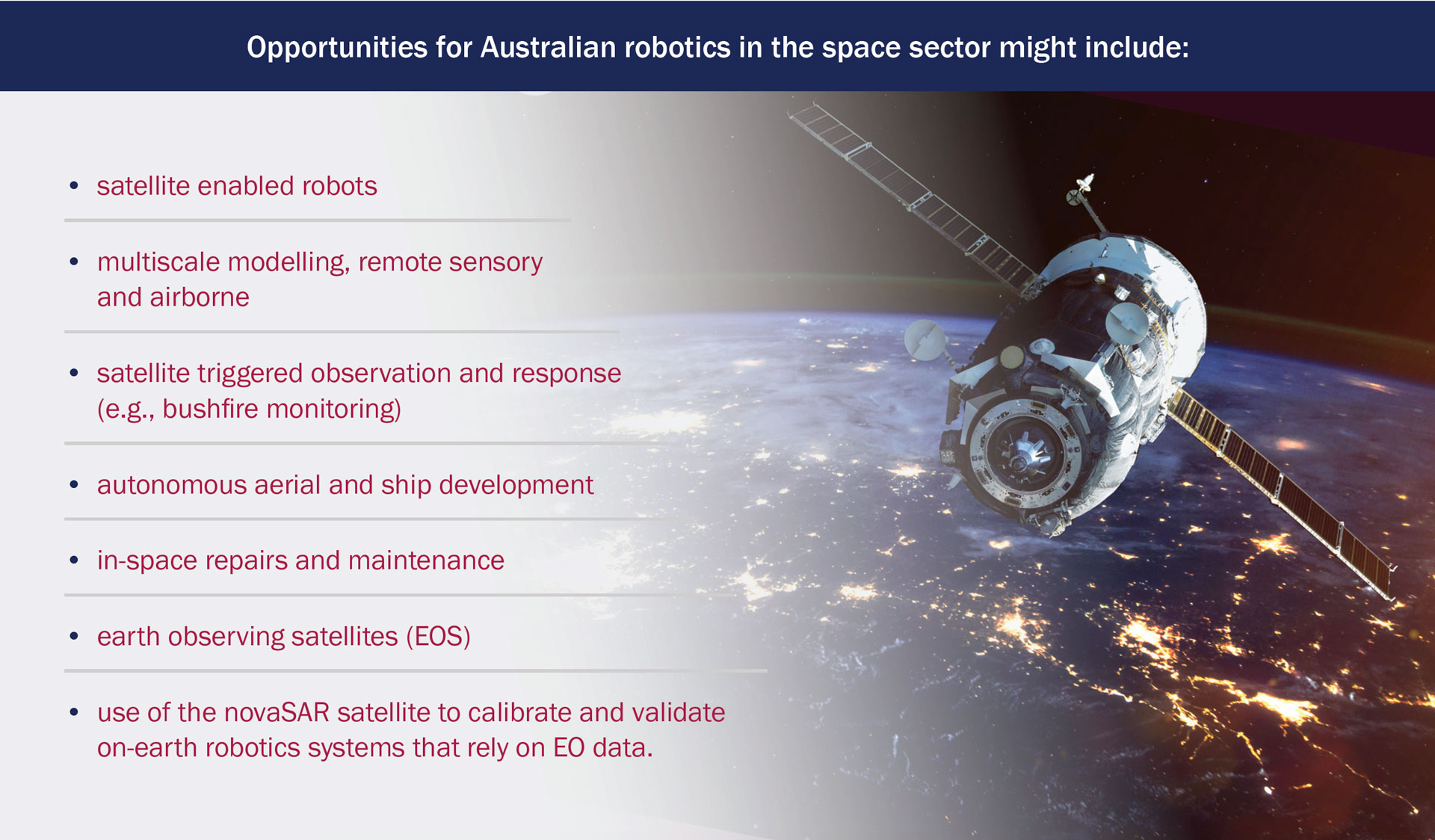
The future of robotics in the space industry
The space industry increasingly relies on technologies from other industries, not developed specifically for space. Key areas of technology for use in space exploration are artificial intelligence/machine learning and intelligent systems, autonomy, nano-sensors, cyber physical systems (digital twins), batteries, robotics, and IoT [GSID17]. Approaches to space exploration are evolving to make the most of these new technologies. In the future, there will be complex manned missions supported by robotic elements in orbit, automated laboratories on the surface of exploration sites, and mobile units directly supporting human explorers working together in human/robot teams.
Among the first steps necessary to achieve this vision will be the development of an orbital framework under which to carry out missions within a cooperative network. There will be potential for systems ranging from semi-autonomous all the way to fully autonomous to handle operations, encompassing satellites to space logistics. Imaging and sensing satellites will be a cornerstone of thorough exploration and scientific progress, informing, and sometimes controlling, surface activities. There will be a need for rovers to explore, with landers acting as base stations, and automated laboratories to slowly build up capability and become more complicated networks of robot/robot cooperative systems.
Robots will increase the capability and capacity of missions. They can be used to prepare habitats for humans to live in when they arrive on the surface of the exploration site. Sensing satellites and scouting rovers will help human survival, while optimising activities, and increasing safety. Smart vehicles and assistive robotic systems such as exoskeletons will be deployed to help collect samples, and transport personnel and material. Automated laboratories, working at the direction of human operators, will allow for much faster analysis of greater volumes of material. Cooperative robotic systems and networks will form a hub that will allow long-term sustainable exploration of space and build-up of capabilities. Greater robotic independence and automation will be an important development, allowing for smart rovers and automated laboratories to perform valuable science without direct human intervention. These advances will also have benefits for people on Earth in the future.
Australia has significant strengths in GNSS and GNSS-based PNT, a growing sector of the global space industry [GSID17]. Most of the growth in GNSS devices (more than 9 billion units), will occur in the Asia Pacific region. This creates a market opportunity of more than $AU100 billion for value-added services.
A more speculative market opportunity exists in asteroid mining. It is becoming increasingly attractive to use space resources ‘in-situ’, that is, to extract resources from space for use in space (e.g, from asteroids, the moon, Mars). In the future, it may also become technically feasible to transport resources back to Earth to supplement local supplies and possibly even replace on-Earth mining operations to preserve the environment. Space mining is an area where Australia can leverage its existing reputation as a global leader in mining combined with strong field robotics capability, and expertise in resource extraction technologies. This should be a crucial part of the Australian space agenda. Asteroid mining would raise the profile of Australia’s space industry and demonstrate technology capabilities, positioning Australia as a participant in the low Earth orbit (LEO) economy [ED17].
Australia also serves as a natural living laboratory for testing space robotic technologies before deployment. Many remote areas of Australia with low vegetation cover and sparsely populated areas form ideal testing grounds. Abandoned mine sites could be used to test asteroid mining capabilities. Operating mining systems remotely can naturally be extended into space, if the required base capabilities, such as space communications, space hardware, and space technical environments are available.
The ability to deploy teams of humans and robots in space exploration relies on effective collaboration. Multi-robot systems for exploration make a lot of sense in terms of cost, robustness and reusability. Whereas early research focused on how multiple robotic assets can collaborate in teams including humans and non-embodied agents, there is growing interest in the human dimension of interaction within such collaborative human-robot teams. Unlike autonomous systems designed primarily to take humans out of the loop, the future lies in supporting people, agents, and robots working together in teams in close and continuous human-robot interaction. Research into how software agents and robots can seamlessly participate in teamwork alongside people in carrying out complex real-world tasks will be an important focus area. Just as important, developers of such systems need tools and methodologies to ensure that such systems will work together reliably and safely, even when they have been designed independently.
Australia has a strong education system with a good research and development base in space technologies. The key challenge for the Australian space industry is to build a path from research to industrialising and commercialising the resulting products and services. Many Australian graduates and researchers with space capabilities leave to work overseas, and while some are attracted back, the lack of employment opportunities in the sector is a key challenge [ACIL17].

